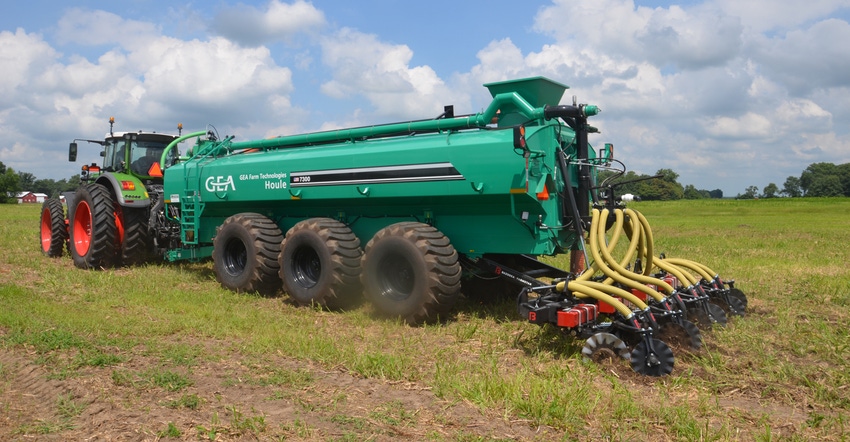November 3, 2020

Indiana is well known for its animal agriculture industry. With all livestock, manure happens! How do you take proper credit for the manure that is produced?
Manure nitrogen credits. What is the nutrient content of your manure? What is the application rate? What percentage of the total N applied do you use in the next cash crop? How much does manure reduce your fertilizer bill?
The goal is to improve the nutrient-use efficiency of manure. Use manure analysis and spreader calibration to apply the planned rate. Nitrogen is always pulling a Houdini, and it is tough to figure out how much credit should be given. Timing and method of applications will have the greatest impacts.
As with all nutrient application, apply manure as close to crop utilization as possible. Use pre-sidedress soil nitrate testing, a chlorophyll meter, in-season tissue testing and end-of-season stalk nitrate testing to fine-tune your manure N credits.
Phosphorus credits. Current soil tests are needed especially for phosphorus. Fields closest to manure storage likely have the highest P soil test, while fields farther away likely have a lower soil test P and can use the P from manure to replace costly fertilizer. Hauling the most nutrient-dense manure to these far-away fields helps pay additional hauling costs.
Injection vs. incorporation. Do you inject or incorporate manure? Manure application on the soil surface is especially susceptible to runoff and volatilization losses. But too much incorporation increases soil erosion potential and degrades soil further.
When possible, inject liquid manure with low-disturbance injectors and incorporate dry manure just enough to get some manure-to-soil contact, or apply dry manure over a growing cover crop. If incorporating liquid manure, remember that the purpose is to get just enough disturbance to get manure-to-soil contact, and consider adding a cover crop seeder box to the tillage implement.
Cover crops. Have you figured out how to use the dual benefits of cover crops with manure and manure with cover crops? Cover crops should be standard operating procedure with all manure applications. The only questions should be about when and how to get the cover crop established in relation to the manure application.
Manure “dating” network. You read correctly! Who has manure and who wants it? Do you have manure to share or trade? Are you already trading manure? Manure has nutrient value and can replace some fertilizer needs. Some farmers paying attention to soil health are exploring how manure builds soil biology. At the 2019 North American Manure Expo in Indiana, a farmer from Ontario reported his goal is to apply manure from a different animal each year to add diversity to his soil health cropping system.
Manure regulations. Follow applicable rules and regulations. Follow all manure application setback requirements from sensitive areas. Know the weather forecast and conditions of your soil, and adjust accordingly prior to applications. Monitor all field tile inlets, risers and outlets prior to and during manure applications.
Manure happens! How much credit can you take for it? Work to fine-tune application rates and methods to better capture benefits of manure.
Bailey is the state conservation agronomist with the Natural Resources Conservation Service in Indiana. He writes on behalf of the Indiana Conservation Partnership.
You May Also Like




